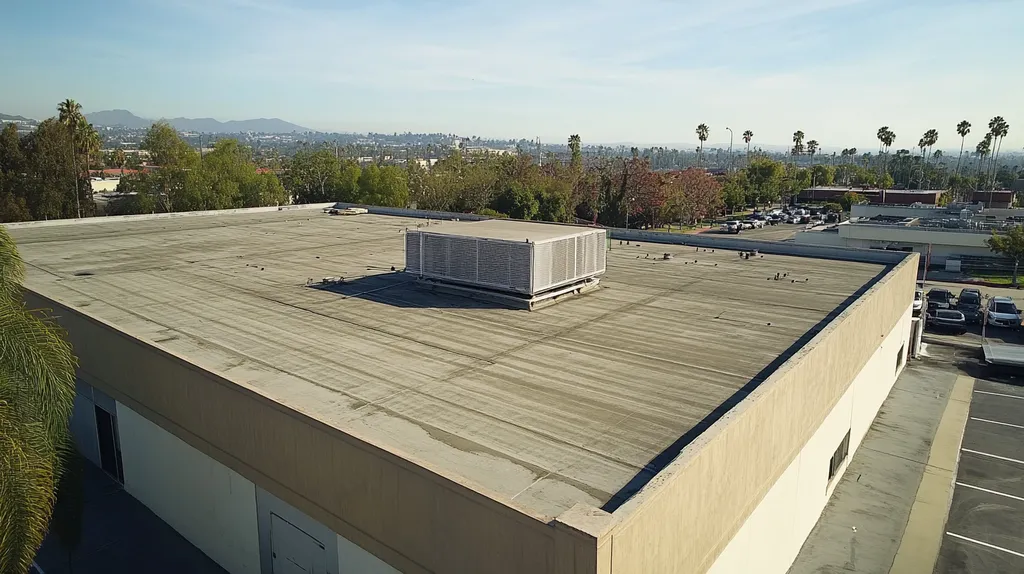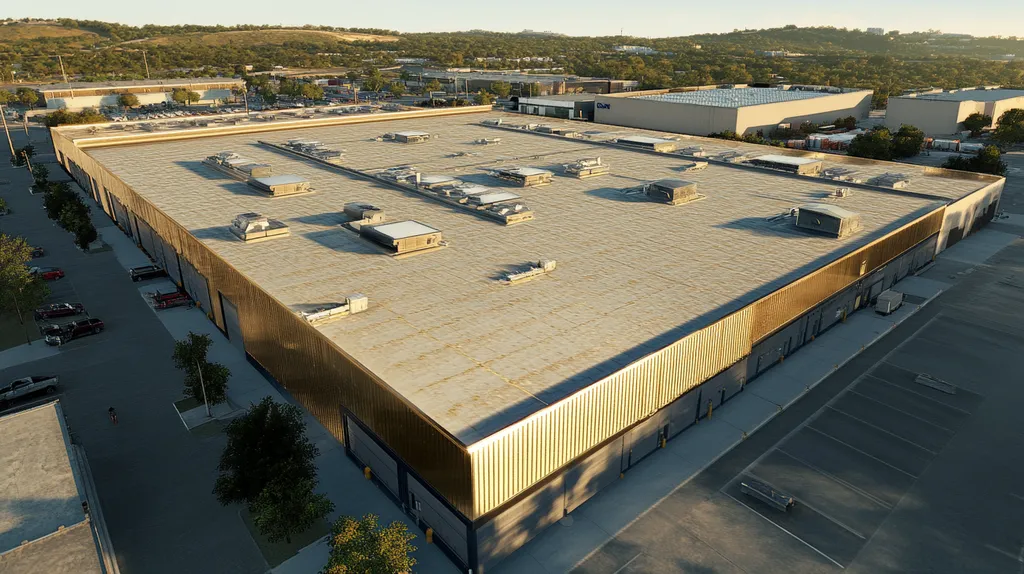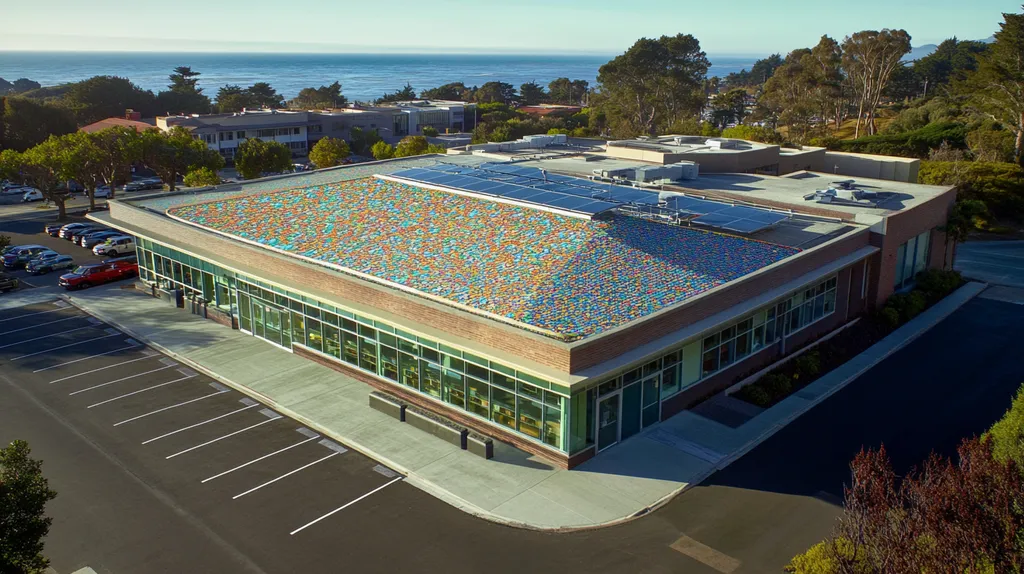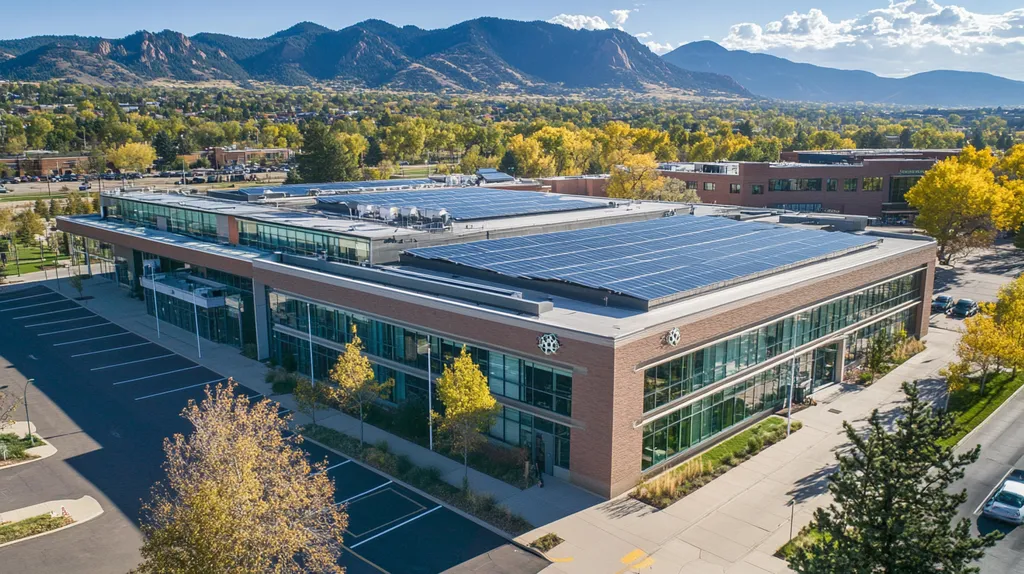Metal commercial roofs represent a significant capital investment, with replacement costs averaging $7-12 per square foot. Yet industry data shows that 90% of premature roof failures stem from inadequate maintenance practices.
For facility managers, establishing a systematic approach to metal roof care isn’t merely about protecting an asset – it’s about preventing costly emergency repairs that can disrupt operations and strain budgets.
This comprehensive guide examines critical factors in metal roof maintenance, from performance monitoring and financial planning to compliance requirements and risk management protocols that safeguard your investment.
SECTION 1: PERFORMANCE FACTORS
Proper maintenance of metal commercial roofs is not merely a routine obligation; it’s a crucial step that can significantly affect long-term costs and building integrity. Industry statistics reveal that nearly 20% of building-related problems stem from roof failures. Conducting regular performance assessments doesn’t just prolong the life of a roof; it also safeguards valuable investments. This section focuses on vital performance factors, including roof condition assessment, material durability evaluation, and weather resistance testing.
Roof Condition Assessment
A comprehensive roof condition assessment is essential for catching potential problems before they escalate into expensive repairs. Facility managers should aim to carry out visual inspections at least twice a year. During these inspections, look for signs of rust, corrosion, and loose seams, noting issues for prompt action.
Utilizing advanced tools like thermal imaging can help identify hidden moisture lurking beneath the surface. Early detection of such issues can save significant time and money down the line. Developing a detailed checklist is a smart way to ensure a systematic examination of each roof section.
By conducting regular assessments, managers can gain valuable insights into the roof’s performance and future maintenance requirements. This proactive approach aids in budgeting for repairs, preventing unexpected financial burdens. In summary, a well-structured assessment strategy is vital for extending the roof’s lifespan and functionality, while neglecting this crucial step could lead to major, avoidable deterioration.
Key Action Items
Material Durability Evaluation
Assessing the durability of roofing materials is crucial to maintaining the integrity of a metal roof. Different materials, such as galvanized steel, aluminum, and copper, possess distinct performance traits that can be affected by environmental conditions.
Facility managers should take into account the geographic location of their buildings when selecting roofing materials. For example, roofs situated in coastal regions may need materials specifically designed to withstand salty air. Understanding these material properties is vital for ensuring long-term durability and adherence to safety standards.
Regular testing and monitoring of existing materials can offer valuable information guiding decisions on necessary upgrades or replacements. Managers who are aware of how materials age can take timely actions before issues arise. Ultimately, investing in high-quality materials now can prevent costly repairs or replacements in the future and significantly enhance overall roof performance.
Key Action Items
Weather Resistance Testing
Weather resistance is a key performance factor for metal roofs, as they must endure various environmental challenges, including heavy rain, snow, and extreme heat. Regular testing for leaks and drainage concerns is vital for ensuring the roof’s performance during severe weather events.
Conducting weather resistance tests—like simulations of heavy rainfall—can identify potential weak points in the roof’s structure. Such assessments shed light on how well the roof manages water flow and highlight areas that may be susceptible to leaks.
Additionally, the thermal dynamics of metal roofs—where materials expand and contract—must be considered. Joints and seals need to be designed to accommodate this movement to maintain effective weather resistance. In conclusion, thorough weather testing is a non-negotiable part of proactive roof care, protecting both the roof structure and the building itself throughout the year.
Key Action Items
SECTION 2: FINANCIAL CONSIDERATIONS
Maintaining metal commercial roofs is more than just a necessity; it has a direct effect on the financial health of a building. Neglecting routine upkeep can lead to steep repair bills and a shortened roof lifespan. In fact, studies indicate that unmaintained roofs can incur costs up to 25% higher compared to those receiving regular maintenance. Facility managers must grasp the financial implications tied to maintenance, budgeting, and the return on investment to make well-informed choices.
Cost-Benefit Analysis of Maintenance
A thorough cost-benefit analysis focused on metal roofing maintenance can reveal significant savings opportunities. Regular inspections can pinpoint minor issues early on, which can prevent them from escalating into much larger and more expensive repairs. For instance, addressing a minor leak promptly can save property owners from the costs associated with water damage restoration.
Moreover, proactive maintenance helps in enhancing the roof’s energy efficiency. An efficient roof can reflect heat, which ultimately lowers energy expenses. Therefore, the costs associated with regular maintenance often compensate for themselves over time by reducing operational costs.
While the specifics of these analyses may vary, standardized metrics generally show that facilities investing in routine inspections can save an average of 10-15% on total roofing expenses. Recognizing this link between maintenance and financial savings can empower facility managers to adopt effective roofing strategies.
Key Action Items
Budgeting for Repairs and Replacement
When planning for roof repairs or replacements, understanding both immediate costs and long-term needs is critical. Facility managers must include routine maintenance budget allocations to prepare for those unexpected repairs. On average, it’s advisable to set aside 1-3% of the building’s total value for annual roof maintenance and repairs.
Additionally, future-focused budgeting for replacements is essential. Many metal roofs are built to last between 40 to 70 years, contingent on material quality and proper maintenance. By incorporating potential replacement costs into financial planning, property owners can avoid last-minute financial strains.
Establishing a reserve fund dedicated to roofing can smooth out any financial surprises. Regular contributions to this fund enable property owners to manage significant expenses effectively when repairs or replacements become necessary.
Key Action Items
ROI on Preventive Maintenance
The return on investment (ROI) for preventive roof maintenance can be substantial. Facilities that prioritize regular maintenance frequently enjoy an ROI exceeding 300%. This advantage primarily comes from a reduction in emergency repairs and an extended roof lifespan.
For instance, routine tasks like gutter cleaning and inspections can lead to a remarkable 25% increase in the roof’s longevity. Moreover, taking preventive actions such as sealing joints effectively prevents leaks, safeguarding the entire infrastructure.
Ultimately, investing in maintenance not only keeps costs low but also protects property value. A well-maintained roof boosts the overall appeal of the facility, which can attract more potential tenants or buyers. Clearly, the financial rationale for preventive maintenance is straightforward: proactive strategies lead to cost savings and long-term benefits for property owners.
Key Action Items
SECTION 3: COMPLIANCE REQUIREMENTS
Facility managers are increasingly tasked with ensuring that their metal roofs comply with a range of regulatory requirements. When compliance is overlooked, the consequences can be severe—ranging from hefty financial penalties to considerable project delays. In fact, reports indicate that nearly 30% of facilities have faced costly holdups due to compliance issues. Therefore, understanding the key areas of regulatory standards, manufacturer specifications, and insurance obligations is vital for effective roof management.
Regulatory Standards and Codes
Metal roofs must comply with local, state, and federal building codes that emphasize safety, energy efficiency, and environmental sustainability. Ignoring these regulations can put both finances and worker safety at risk. Additionally, conforming to standards set by organizations such as the American National Standards Institute (ANSI) is essential for preventing complications during inspections.
Noncompliance can severely impact property resale values, as prospective buyers typically scrutinize compliance during inspections. Facilities that prioritize adherence to these regulations can mitigate future financial consequences and legal risks.
Engaging in regular audits and expert consultations can provide clarity on applicable codes. This proactive approach not only enhances safety but also extends the lifespan and performance of metal roofs.
Key Action Items
Manufacturer Specifications Compliance
Every metal roofing system comes with specific manufacturer guidelines that dictate installation, maintenance, and materials. Ignoring these can void warranties and lead to costly repairs. For example, neglecting recommended cleaning schedules may result in corrosion and other deterioration issues.
Documenting all maintenance activities as per these specifications is essential. In the event of warranty claims, this documentation validates the quality of care provided. Regularly revisiting service contracts helps ensure that expectations are clearly understood among all involved parties.
It’s vital for facility managers to keep pace with evolving best practices and updated manufacturer guidelines to sustain roof integrity and uphold warranty provisions.
Key Action Items
Insurance and Warranty Requirements
Compliance with regulatory standards and manufacturer guidelines is often a prerequisite for insurance coverage. Failing to meet these obligations can lead to denied claims when damages occur, amplifying the importance of aligning roof maintenance with insurance policies.
Warranties outline responsibilities for both property owners and manufacturers, and understanding these terms is key for facility managers to ensure ongoing coverage. Regularly scheduled maintenance that adheres to warranty specifications can prevent minor issues from escalating and ensure that coverage remains intact.
To mitigate risks effectively, facility managers should routinely review insurance policies and stay informed about specific requirements linked to both insurance and warranties for optimized planning.
Key Action Items
SECTION 4: RISK MANAGEMENT
Effective risk management is vital for preventing costly repairs and operational setbacks related to metal commercial roofs. Issues such as water infiltration, structural strain, and general neglect can jeopardize roof integrity. Alarmingly, around 30% of roof failures are attributed to inadequate maintenance practices. This section discusses essential components of risk management, such as identifying potential hazards, mitigating risks from water damage, and maintaining structural integrity.
Identifying Potential Hazards
Proactively identifying potential hazards plays a crucial role in effective risk management for metal roofs. Failing to spot issues like rust, punctures, or loose seams may lead to serious complications. Regular inspections are key; in fact, data from the National Roofing Contractors Association reveals that 50% of roofs are replaced prematurely due to neglect.
Facility managers should implement a systematic inspection routine. Utilizing visual checks and drone technology can reveal hidden weaknesses. Channels of vulnerability, such as roof penetrations and flashing, should be closely monitored to prevent minor issues from escalating into major problems.
Documenting inspection findings fosters accountability and supports future planning. By creating a hazard inventory, property owners can prioritize repairs effectively. Ignoring these risks initially may disrupt business operations and lead to unexpected expenses.
Key Action Items
Mitigating Water Damage Risks
Water damage represents one of the most substantial risks to metal roofs. It can lead to mold growth, structural weakening, and costly repairs. Identifying and sealing potential leak points, such as seams and joints, is crucial for minimizing these risks.
Regular maintenance should incorporate cleaning gutters and downspouts to ensure proper water drainage. Clogged systems cause water pooling, raising the chances of leaks. A survey from the Roof Coatings Manufacturers Association found that 40% of water-related issues result from inadequate drainage.
A comprehensive water damage prevention plan should include steps to correct any leaks or weaknesses immediately. Installing a robust roof coating system also offers additional protection against water infiltration. Educating staff about the signs of leaks can promote early responses to potential issues.
Key Action Items
Managing Structural Integrity
Ensuring structural integrity is critical for the longevity of any roofing system. While metal roofs are known for their durability, they still experience wear over time. External factors such as heavy snow accumulation, strong winds, and temperature variations can affect roof strength.
Routine inspections should focus on assessing load-bearing components and fasteners for signs of fatigue. Specialized monitoring equipment can help detect structural anomalies before they escalate into significant issues.
Facility managers must also consider the impact of roof-mounted equipment on overall structural integrity. Distributing the weight of HVAC units or other systems correctly prevents localized stress points. Following secure installation practices reduces unnecessary wear and tear on the roof.
Key Action Items
SECTION 5: OPERATIONAL PROCEDURES
Implementing proactive operational procedures for metal commercial roofs is essential to avoid significant financial losses from preventable issues. Statistics from the National Roofing Contractors Association show that with proper maintenance, up to 80% of a roof’s lifespan can be enhanced. Facility managers must establish clear routines for inspections, debris management, and repair protocols to protect their assets and maximize roof longevity.
Regular Inspection Schedules
Establishing routine inspection schedules is crucial for catching issues early on. Inspections should happen at least twice a year, ideally during spring and fall, and after severe weather events. Inspectors must check for rust, corrosion, and the integrity of seals to identify problems before they worsen.
Employing infrared thermography can uncover hidden moisture issues, enabling timely action. Documenting inspections yields valuable data on roof performance trends. A structured approach helps ensure that minor fixes don’t escalate into costly repairs.
Incorporating professional assessments for deeper evaluations is also wise. This adds an extra layer of safety and ensures that complex issues are systematically addressed. Each inspection should include checks of flashings, seams, and penetration points, where leaks are likely to occur.
Key Action Items
Debris Removal and Gutter Maintenance
Removing debris from roofs and gutters is vital for preventing water buildup and promoting effective drainage. Clogged gutters can lead to overflow, causing water to pool on the roof and accelerate corrosion, critically shortening its lifespan.
A minimum monthly check for debris is recommended, along with seasonal adjustments for challenges like autumn leaves or winter snow. Trained roof teams can safely manage debris removal while safeguarding the roof’s surface.
Gutters should be cleaned bi-annually to ensure they function optimally. Repairing or replacing damaged gutters promptly averts further complications. A solid debris management strategy significantly reduces the risk of unexpected repairs down the line.
Key Action Items
Repair and Replacement Protocols
Clear repair and replacement protocols are essential for the upkeep of metal roofs. Addressing minor issues quickly can preempt serious problems like leaks or structural damage. A standardized repair process helps facility managers act swiftly and effectively when issues arise.
Implement a tiered approach for repairs based on severity. Minor issues may just need sealants, while more significant problems could require full panel replacements. Keeping a detailed repair history aids in long-term planning and budgeting.
Facility managers should also recognize when to consult professionals. Complex repairs, like extensive rust removal or significant structural issues, should be performed by qualified contractors. Relying on expertise ensures that repairs adhere to best practices and maintain warranty standards.
Key Action Items
SECTION 5: OPERATIONAL PROCEDURES
Proactive operational procedures are crucial for metal commercial roofs to prevent significant financial losses from avoidable issues. Each year, businesses face expensive repairs stemming from neglected maintenance. The National Roofing Contractors Association reports that proper upkeep can enhance up to 80% of a roof’s life expectancy. Facility managers need to implement clear routines for inspections, debris management, and effective repair protocols to protect their assets and ensure longevity.
Regular Inspection Schedules
Routine inspection schedules are essential for catching potential problems early. Inspections should occur at least twice a year, preferably in spring and fall, and after severe weather events. Each inspection must evaluate rust, corrosion, and the integrity of seals to detect issues before they worsen.
Utilizing infrared thermography can uncover hidden moisture challenges and allow for timely interventions. Documenting inspections provides valuable data, enabling facility managers to understand roof performance over time. A structured approach helps ensure that minor repairs do not escalate into major financial burdens.
Involving trained professionals for comprehensive assessments enhances safety and addresses complicated issues correctly. Each inspection should include checks of flashings, seams, and penetration points where leaks often occur, reinforcing the roof’s integrity and maximizing its lifespan.
Key Action Items
Debris Removal and Gutter Maintenance
Clearing debris from roofs and gutters is essential for preventing water accumulation and ensuring proper drainage. Blocked gutters can lead to overflow, which causes water pooling on the roof and accelerates corrosion, critically shortening the roof’s lifespan.
A minimum monthly check for debris is advisable, with adjustments for seasonal challenges like autumn leaves or winter snow. Trained roof teams can safely manage debris removal, protecting the roof’s surface in the process.
Cleaning gutters bi-annually helps maintain optimal drainage and prevents costly repairs. Promptly repairing or replacing damaged gutters further reduces complications. Implementing a solid debris management strategy significantly minimizes the risk of unexpected repairs in the future.
Key Action Items
Repair and Replacement Protocols
Having clear repair and replacement protocols is essential for maintaining metal roofs. Addressing minor issues promptly can prevent severe problems like leaks or structural damage. A standardized process helps facility managers respond quickly and effectively when issues arise.
Implement a tiered approach for repairs based on severity. Minor issues may need sealants, while larger ones might call for full panel replacements. Keeping a detailed record of repairs aids in long-term planning and budgeting.
Facility managers should recognize when it’s necessary to consult professionals. Complex repairs, such as extensive rust removal or significant structural issues, should be handled by qualified contractors to ensure adherence to best practices and warranty requirements.
Key Action Items
The Bottom Line
Industry data shows that 90% of premature metal roof failures stem from inadequate maintenance, potentially costing facility managers millions in emergency repairs and business disruptions.
By implementing the comprehensive strategies outlined in this guide – from performance monitoring and financial planning to compliance and risk management – organizations can extend their roof’s lifespan by 15-20 years while reducing annual maintenance costs by up to 25%.
The stakes are clear: proactive maintenance is not optional for metal commercial roofs.
Facility managers who act now to establish systematic inspection schedules, maintain proper documentation, and follow manufacturer specifications will protect their capital investment while avoiding costly emergency repairs that can derail operations and strain budgets.
FREQUENTLY ASKED QUESTIONS
Q. What are the key performance factors for a commercial roof?
A. The main factors include regular condition assessments, material durability checks, and weather resistance testing. Conducting bi-annual inspections helps catch potential problems early, ensuring prolonged lifespan and performance of the roof.
Q. How can routine maintenance for an industrial roof save costs?
A. Regular maintenance helps identify small issues before they escalate into costly repairs, thereby extending the roof’s lifespan and reducing overall expenditure. Comprehensive evaluations show that proactive upkeep can save up to 25% on total roofing expenses.
Q. What compliance requirements should facility managers of commercial roofs consider?
A. Compliance with local building codes, industry standards, and manufacturer specifications is crucial. Regular audits ensure adherence, mitigating risks and avoiding costly penalties or project delays while maintaining roof performance and safety.
Q. How can risk management improve industrial roof longevity?
A. Identifying hazards like leaks and structural strain enables proactive measures to mitigate risks. Regular inspections and maintenance reduce the likelihood of significant failures, protecting the overall integrity and lifespan of the roof.
Q. What operational procedures should be in place for commercial roofs?
A. Implementing proactive inspection schedules, debris removal strategies, and clear repair protocols helps prevent costly issues. Regular maintenance checks and timely repairs are necessary to protect the roof’s longevity and operational efficiency.
Q. How often should debris be removed from commercial roofs?
A. Debris should be checked and cleared at least monthly to prevent blockage of drainage systems. Seasonal adjustments for challenges like leaves or snow are also advisable to maintain effective roof performance and prevent deterioration.
Q. What types of materials are most durable for industrial roofs?
A. Common durable materials include galvanized steel, aluminum, and copper. The optimal choice often depends on the geographic location and environmental conditions, as these factors affect each material’s performance and longevity.











